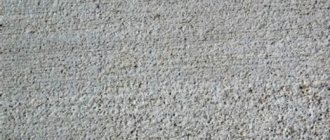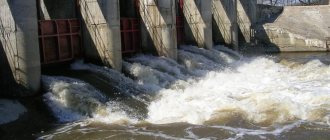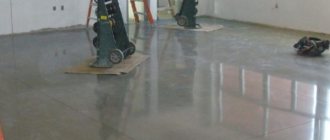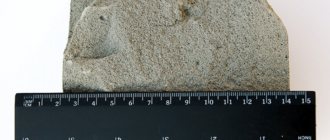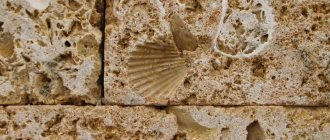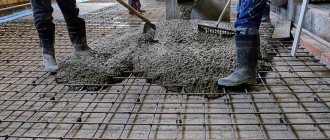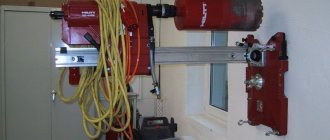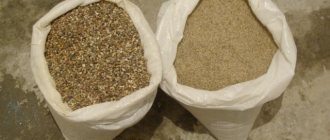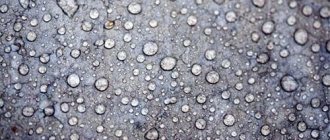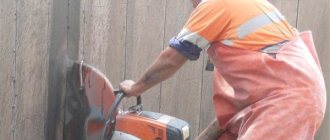What is skinny concrete
Lean concrete refers to a material with a lower cement content than regular concrete. Otherwise, it is the same rigid mixture of a binder component, fillers and water, which is compacted by rolling during the pouring process. Due to the reduced proportion of cement in the composition, the finished material turns out to be less durable than the classic one, but still more reliable than soil or stone bedding.
Lean concrete is widely used in various areas of construction where it is not economically feasible to use expensive fatty compounds. It helps to stabilize and strengthen the substrate for subsequent construction work without unnecessary financial expenses. Depending on the size of the filler fraction, the material can be coarse-grained or fine-grained.
How to buy skinny concrete: Tips for choosing
Therefore, construction experts recommend ordering ready-made compounds. to buy thin concrete in Moscow, but it’s not so easy to choose a conscientious seller.
A good manufacturer can be easily distinguished by the following characteristics:
- offers lean concrete at a market-level price: if the cost of the solution is much lower than that of competitors, most likely this is a fly-by-night company that you will not find after you pay the money;
- the manager will not offer to order you a solution “with a reserve” or “by eye” - a good specialist will definitely find out for what work the material is required and calculate the exact volume;
- Every driver should have all the necessary documents when delivering concrete - a good manufacturer does not hide anything, hands over a full package of documents (certificates, concrete passport, factory invoices, etc.). If the driver says that all the papers are in the last car, this is a clear sign that the manufacturer has something to hide. And you will most likely never see the documents again. Accordingly, if problems arise with the product (for example, when they bring you an aqueous solution instead of a well-mixed concrete composition), you will not be able to sue the unscrupulous supplier.
manufactures, sells and delivers lean concrete - and not only - throughout Moscow and the Moscow region. We have our own fleet of vehicles, so you don’t have to contact different companies for concrete and its delivery. Our drivers will deliver your order exactly at the agreed time without delays or postponements - and you can get to work right away.
If you have questions about the quantity or brand of concrete required, please contact us; managers with special construction education will tell you what material you will need and its exact quantity. Don't spend extra money - contact us!
Areas of use
Most often, lean concrete is prepared to strengthen foundations and arrange underlying layers for the purpose of further installation of various structures. It is especially in demand when making road pavements. Road foundations poured in this way are an order of magnitude cheaper than coatings made from plastic mixtures. In addition, the time intervals between laying individual layers are reduced, since the material gains strength faster. A layer of lean concrete 15-20 cm thick will last at least 25 years, since if properly manufactured it is quite resistant to cracks and ruts.
The material can be used to lay foundations for various paths and platforms in everyday life and construction. Its effectiveness increases when distributed over a layer of compacted, purified sand and crushed stone.
When leveling surfaces using lean concrete, it is convenient to install prefabricated structures and install reinforcement. The overlying layers will be reliably protected from the seepage of cement laitance, which can ruin concrete of higher grades.
Other areas of use of the material are:
- pouring the bases for the foundation (monolithic or prefabricated);
- arrangement of subfloors (screeds) in domestic conditions, for industrial and civil facilities;
- landscaping;
- repair of old foundations by using concrete;
- laying runways and temporary routes for transport.
Types of concrete
According to GOST 25192-2012 (in Ukraine - DSTU B V.2.7-221:2009), concrete is classified according to its main purpose, type of binder, type of aggregates, structure and hardening conditions:
- According to their purpose, they distinguish between ordinary concrete (for industrial and civil buildings) and special concrete - hydraulic, road, thermal insulation, decorative, as well as special-purpose concrete (chemically resistant, heat-resistant, sound-absorbing, for protection against nuclear radiation, etc.)[3].
- Based on the type of binder, cement, silicate, gypsum, slag-alkaline, asphalt concrete, plastic concrete (polymer concrete), etc. are distinguished.
- Based on the type of aggregates, concretes based on dense, porous or special aggregates are distinguished.
- Based on their structure, concrete is classified into dense, porous, cellular or large-porous structure.
- According to the hardening conditions, concretes are divided into those that harden under natural conditions;
- under conditions of heat and humidity treatment at atmospheric pressure;
- under conditions of heat and humidity treatment at pressure above atmospheric (autoclave hardening).
In addition to the classification GOST 25192-2012 (DSTU B V.2.7-221:2009), the classification of concrete by volumetric mass is used:
- especially heavy (density over 2500 kg/m³) - barite, magnetite, limonite;
- heavy (density 2200-2500 kg/m³);
- lightweight (density 1800-2200 kg/m³);
- light (density 500-1800 kg/m³) - polystyrene concrete, expanded clay concrete, foam concrete, aerated concrete, wood concrete, vermiculite, perlite;
- especially light (density less than 500 kg/m³).
Based on the content of binder and fillers, concrete is divided into:
- lean
- with a reduced content of binder and a high content of coarse aggregate; - fatty
- with a high content of binder and a reduced content of coarse aggregate; - commercial
- with the ratio of fillers and binders according to the standard recipe.
Composition and proportions
Lean concrete includes the main binder - Portland cement or Portland slag cement grade M300 and higher. In addition, the material contains fine (less than 5 mm) or large (up to 4 cm) fraction filler and water with a pH of 4-12.5 units. The liquid must be clean, in which surfactants, salts, phenols do not exceed permissible concentrations, and there are no fats, oils, or petrochemical products. Modifiers and plasticizers are also added to lean concrete (no more than 5% of the total mass).
These substances are selected depending on the specific purpose of use of the raw material and can improve the following indicators:
- moisture resistance;
- frost resistance;
- density;
- setting speed;
- plastic.
The fraction of crushed stone in the composition of concrete determines its overall grain size. Crushed stone cannot be larger than 40 mm in size. Otherwise, the stability of the composition to rolling will be impaired. The ratio of cement and water is selected taking into account the required strength, porosity/density.
The type of cement used is also taken into account. As a rule, the water-cement ratio is in the range of 0.35-0.45. For 1 cubic meter of finished concrete, 120-145 liters of water are poured (with crushed stone water absorption of 0.1-2%) or 145-165 liters (with crushed stone water absorption of 2-8%).
In domestic conditions, they operate more simply - they take about 70% of the water from the volume of cement when using fine-grained filler and increase this amount to 80-85% for fillers of a larger fraction. It is impossible to greatly change the established water-cement ratio, since this causes shrinkage of concrete, reduces its density, strength and frost resistance.
Concrete composition
The characteristics of components for the production of concrete are standardized by GOST 26633-91.
For a “lean” mixture use:
- mineral binders - PC or ShPC grade 300 and higher in quantities determined by calculation;
- fillers - fractions up to 5 mm for fine-grained concrete, up to 40 mm for coarse-grained concrete, with dusty clay inclusions up to 10%;
- water with a pH value of 4-12.5 without phenols, oils, petroleum products;
- modifiers according to production technology and required characteristics.
If the filler is porous, increase the amount of water. All raw materials are subjected to radiation-hygienic assessment.
Specifications
Specific technical parameters will depend on the brand of finished lean cement. On average, they are within the following limits:
- density - 2450-2500 kg/cubic. m;
- compressive strength - 75-200 MPa;
- water resistance - about 6%;
- hardness - 90-120 s;
- mobility of the mixture - 10-15 cm;
- frost resistance - 50-100 cycles.
Compaction factor
Compared to ordinary concrete, lean concrete has reduced strength, and it is also prone to deformation. This problem can be solved by sealing, which makes it stronger and more durable. Concrete is compacted by using a vibrating plate or roller, which allows for better distribution of the solution in the mold, optimizes the adhesion of the components to each other and displaces air. The raw material compaction coefficient should be 0.98-1.
Stamps
The most popular are three grades of concrete - M100, M150, M200. There are also brands M50 and M75, but they are almost never used now.
M100
This brand is considered very popular in the construction market, despite its reduced strength parameters. It is the most affordable and is well suited for pouring rough screed, arranging paths, sidewalks, and parking areas. M100 is used for city improvement, creation of suburban buildings, recreation areas, and small architectural forms. To obtain M100 grade concrete, take 10 parts of M400 cement, 41 parts of sand and 61 parts of crushed stone.
M150
This concrete is used if there is a need to create more durable structures. It is resistant to low temperatures and waterproof enough to be actively used on construction sites. With its help, they build strip and monolithic foundations, impart increased strength to the soil, and pour screeds and floors.
The material is suitable for improving cities, towns, creating parking lots and pedestrian paths, boulevards, and residential streets. For mixing, use 10 parts of M400 cement, 32 parts of sand and 50 parts of crushed stone. If cement grade M500 is used, then the proportions change to 10:40:58.
M200
The technical characteristics of the M200 grade material are close to those of heavy concrete. It is the strongest and most durable, has the longest service life and is suitable for arranging:
- runways;
- foundations and foundations for them;
- highway surfaces;
- figured tiles for sidewalks;
- screed;
- walls and ceilings.
Due to its great frost resistance, water resistance and strength, concrete M200 can be used even for the construction of open-air structures in areas with an unfavorable climate. The proportions of M400 cement, sand and crushed stone for its preparation are 10:25:42. For M500 cement, the proportions change to 10:32:49.
Advantages and disadvantages
Lean concrete is now one of the most common building materials. This is due to its advantages and positive properties. Thus, the composition can be quickly mixed directly at the construction site or delivered ready-made using special machines. The initial setting time allows for high-quality distribution and leveling of the mixture over the surface.
Other advantages of the composition:
- Economical. The material contains less cement, therefore, its overall cost will be reduced. The solution consumption is also low, which further reduces costs.
- Reliability. Concrete has excellent technical characteristics and physical and mechanical parameters; it is strong, homogeneous, and durable.
- Waterproof. With a pressure on the surface in the range of 0.2-0.4 MPa, the finished layer withstands contact with water perfectly and does not collapse.
- Frost resistance. Lean concrete easily withstands many cycles of freezing and thawing, it can be used even in harsh conditions.
- Fast final curing. The use of ready-made structures or the pouring of the next concrete layer will be carried out in a short time.
- Easy to make and install. To work with such raw materials, you do not need special knowledge and skills; even a beginner can prepare and distribute the solution.
- Light weight. Compared to classic concrete, lean concrete has a lower density, therefore it is quite light and creates less load on building structures.
There are few disadvantages to this material, but they still exist. Its strength characteristics are reduced, and it cannot be used for complex, critical concreting work. In the absence of special additives and plasticizers, the concrete layer may become cracked and deformed, which negatively affects its operational parameters, integrity and durability. The introduction of bitumen-based emulsions into the composition can solve this problem.
Preparation of lean concrete
To knead approximately 1 cu. m of lean concrete grade M100, you need to prepare the following components:
- water - 140 liters;
- cement M400 - 170 kg;
- sand - about 700 kg;
- crushed stone - 1030 kg;
- additives.
Water and additives (plasticizers, retarders, etc.) are poured into the concrete mixer, then cement and sand are poured. The last thing to load is crushed stone. The finished mixture should be homogeneous, but not creamy. Skinny concrete should resemble semi-dry soil. If the crushed stone in the material has a fine fraction, you will have to add a little more water. After 3-10 minutes of mixing, the mass is ready for installation. When mixing by hand, first combine all the dry ingredients and then dilute them with water.
Material transportation
The finished material should be delivered to construction sites as quickly as possible. Since it contains little moisture, the setting time during long-term transportation begins to decrease. Transportation is carried out using dump trucks. If the travel time exceeds 1 hour, about 1% sulfite-yeast mash is added to the composition as a curing retarder. In addition, the raw materials are covered with a film to protect them from drying out. It is equally important to prevent excessive waterlogging of lean concrete. If work is carried out at low temperatures, about 3% calcium chloride is added to the composition.
Low binder concrete
General information
The photo shows an example of using lean concrete.
In order to fully understand the properties and characteristics of lean concrete, you should know the basic principles of preparing concrete as such and keep in mind the dependence of its characteristics on the composition and quality of the components, their proportions and properties.
As we all know, concrete is an artificial stone that is obtained by mixing a dry mixture of cement, sand and crushed stone with water. There are other types of concrete mixtures using asphalt, resin, polymer compositions and slag, but we will talk specifically about cement concrete.
The main component of concrete mortar.
So, in the table you can study the composition of building cement concrete:
Component Description Cement Today, in the production of concrete mortar, Portland cement of the M400 or M500 grades is used, and sometimes slag and pozzolanic cements are used. It is the main binder, which ensures strong adhesion of all other components and a homogeneous stone-like structure of the material. Sand To make concrete mortar, river or quarry sand of fine and medium composition, washed to remove clay and dust impurities, is used. Sometimes coarse sand is used, obtained by crushing rock; in the solution, sand plays the role of a fine aggregate and fills the voids between large components, and also ensures normal hardening of the mixture. Crushed stone Various crushed stone can be used in the composition of concrete - stone, slag, limestone, gravel, etc. For lean concrete, stone, gravel and mixed types of aggregate, both fine and coarse grains, are used; Water. It is a reagent for the cement hydration reaction, which leads to the hardening of the solution. For the optimal course of this reaction, it is important to maintain the correct proportion of reagents (cement and water), which is usually called the water-cement ratio or the W/C module. Water is a reagent for the cement hydration reaction, which leads to the hardening of the solution. For the optimal course of this reaction, it is important to maintain the correct proportion of reagents (cement and water), which is usually called the water-cement ratio or the W/C module. Additives To improve the quality or impart certain properties to the material, special and targeted additives are introduced into its composition - plasticizers, water repellents, antiseptics, sealants, surfactants, air-entraining agents, hardening retarders or accelerators, etc.
Crushed stone is a coarse aggregate for concrete mortar.
The dosage and quantitative ratio of the components determines the properties and quality of concrete. For various purposes, material is prepared with different indicators of strength, density, mobility, frost resistance, water resistance, etc.
From a theoretical point of view, the water-cement module (W/C) has the most significant influence on the characteristics of the resulting stone.
The calculated proportion of water sufficient for successful hydration of cement is 0.2, whereas in practice such a solution will be too dense and unsuitable for laying. Therefore, the practical ratio of water to cement is taken to be 0.3 – 0.7.
Important! Based on the above, we can conclude that the amount of water in the solution is strictly tied to the amount of cement in it by the W/C module.
Dependence of concrete strength on the amount of water and the optimal proportion of water (Vopt).
The amount of sand is usually at least 30% of the total amount of aggregate. The proportion of crushed stone can vary within fairly wide limits depending on the required strength, rigidity, fat content and workability of the solution.
Modern design of mixtures is aimed at increasing the proportion of aggregate and reducing the proportion of cement while maintaining the required strength parameters. Based on the above, we can distinguish a typology of mortars based on the ratio of cement and aggregate.
There are three main types:
- Commodity . Here the ratio of all components is selected for optimal strength, fluidity, frost resistance and water resistance of concrete, characteristic of general construction requirements and needs. It is the main material for the construction of monolithic structures and reinforced concrete products;
- Bold . The ratio is shifted towards a higher cement content. This leads to higher prices and increased mobility of the mixture;
- Skinny . The proportions of the components are shifted towards a lower cement content and an increased crushed stone content, which entails a cheaper mixture and an increase in its rigidity.
The fatty mixture sticks to the spatula and resembles sour cream in consistency.
The main characteristics of concrete are its class, grade, frost resistance class, mobility and density, which are regulated by GOST and SNiP, and are determined by calculation and experiment. We will talk about these parameters in the next section of the article.
Composition and brand
The consistency of lean concrete resembles wet soil.
We have given the definition of lean concrete, now let’s talk about its properties, markings and class affiliation.
In the modern classification used in our country, the main indicator of the quality of concrete is its compressive strength, which is reflected in the marking after the letter M. Thus, the concrete grade M300 indicates that we have a material that can withstand a compressive load of 300 kgf /cm2.
At the same time, global classification practice operates with such a concept as concrete class. The main difference here is that to determine the class, they do not take average indicators, but test results in which the prototype demonstrated compliance with the declared strength in 95% of cases.
The ratio of brands and classes with the corresponding compressive strength.
According to the rules adopted in SNiP 2.03.01-84, the class is designated by the letter “B”, followed by an indication of the compressive strength in megapascals. There are classes from B3.5 to B80; when determining them, many coefficients and other quality indicators are also taken into account.
Thus, if we have a material of class B10, this means that in 95 cases out of a hundred, a prototype of this concrete withstood a pressure of 10 MPa.
Lean concrete most often belongs to strength class B7.5, sometimes B10 and B15. These classes correspond to the grade of lean concrete M100 - M200. To obtain more durable grades, a thicker formulation or highly active cement is used.
The high crushed stone content makes the solution quite hard.
As already mentioned, the composition of lean concrete has an increased content of crushed stone with a reduced proportion of cement. At the same time, per 1 m3 of class B7.5 concrete there are the following number of components: 160 kg of Portland cement M400-D0, 800 kg of sand, 1300 kg of crushed stone and 75 - 90 liters of water.
Important! The reduced content of cement in the solution leads to the fact that its price becomes noticeably lower than other brands. This is the main motive for the creation and use of lean concrete.
Due to the low cement content, and therefore water content, the lean type of mortar is comparatively hard. It has a standard hardness of 31 - 60 s and practically does not shrink the cone, which corresponds to the workability grade Z4.
When hardened, the material has this structure.
Frost resistance, as a rule, corresponds to class F50 - F100, which indicates the number of freezing-thawing cycles that the material can withstand without significant losses in quality and strength. Water resistance ranges from grades W4 to W8, with class B7.5 material being characterized by W4. An increase in this indicator is achieved by introducing pozzolanic and other special additives.
Laying lean concrete
Before starting the main work, clear the surface of snow, ice, debris, and level it as much as possible. When preparing the screed, a cushion of sand or crushed stone is laid in advance, and only then an even layer of concrete is placed, which usually does not exceed 10 cm. The size of the concrete layer when creating road surfaces can be 15-20 cm. When arranging the foundation, depressions are made in advance in the soil so that then install reinforcing structures.
After the concrete has been distributed, it is compacted with a mechanical roller or a special vibrating tool. Afterwards, make sure that the surface does not dry out. In summer, it is covered with film and regularly watered. Operation or installation of formwork for subsequent structures is permitted when the strength of the solution reaches 1.5 MPa. Lean concrete is an excellent material for construction and renovation. It is easy to manufacture and operate, cheap and economical in consumption, therefore it is an excellent alternative to expensive commercial mixtures.
